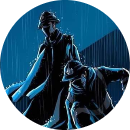You are going to read an article about fitness website on the internet. Seven sentences have been removed from the article. Choose from the A-H the one which fits each gap (1-7). There is an extra sentence which you do not need to use.
The benefits of fitness online training
Thanks to Internet you can now get into shape dressed in your pyjamas. By Lucy Atkins
Fitness experts these days generally agree that “natural exercise” is the answr to our unhealthy lifestyles. An activity such as stair- climbing or running for the bus, they say, gets the heart rate going for five or ten minutes, several times a day, without the boredom of going to a gym or jogging round the park.
But thanks to the Internet it is now at least theorically possible to get into great shape without even changing out of your pyjamas. The web is packed with creative, instant and varied excercises that are often avalablefree. Just start typing and watch the kilos disappear.
Joanna Hall is a fitness expert who has set up a walking club on the Internet. At her Walkative website, she promises that in six weeks you can achieve a 25% increase in fitness levels by following her activity programme based entirely on walking. “These days people are used to finding that what they need online,” she says.
Perhaps the best way to deal with this problem is just to have a look around and see what’s out there
One click of your mouse can take you, for instance, straight into an aerobics, dance and yoga class, or introduce you to a variety of other lively activities. You can put together your own strength training programmes, concentrate on particularly week body parts or learn new ways of getting fit.
There are so many possibilities that you could spend the entire day sitting on your chair just surfing the websites and chatting with all these new friends you have made.
Quality, however, can be hardeer to find. Some sites try to attempt you into buying DVDs after they’ve started you off with free beginners” programmes.
Sometimes the quality of the picture or the sound can be extremely poor.
You have to put up with advertisements that suddenly appear on the screen, and there is the annoying tendency of some computers suddenly to pause in the middle of an activity, then return to the the beginning of the video when you start clicking the mouse.
“ Online programmes allow you to fit your training times around other things you have to do, such as going to collge or work,´says Hall. “They can be a very effective and achievable way to exercise, something you can do all year round.” You can use them any time of the day or night, in an office, hotel room or at home. In addition, you do not have to
turn up at a gym or studio on time, wear embreassing clothing, or deal with annoyingly fit people.
If a particular fitness programme doesn’t fit you, the website may suggest ways of adjusting it to your own needs. It should also, most importantly, offer advice on healthier living in general.
Some sites will help you brig this about by providing charts showing how much change you can expect for a given amount of exercise. They may even encourage you to keep to your training programme by sending you regular emails, perhaps including a daily “fit tip”
All that is fine, but the trouble is that you do also need to have a certain amount of self-displine to ensure that you keep going once you have started.
There’s also the danger that family, friends or colleagues could some in and start laughing at you at any time. And there is a risk of injury if you don’t follow the more comples instructions ( though this issue arises with exercise DVDs and poorly taught classes too). Still, if you want a cheap, possibly fuuny and definitely varied ways to get fit, then sit back and surf.
A. Once you manage to find a more worthwhile website, however, there are real advantages. B. Of course, it’s not easy to include exercise in your daily routine if you are lazy and spend all day sitting around at home. C. Best of all, you can do so with the support of in online community who have the same aims as you. D. Otherwise it’s just too easy to give up because you’ve paid nothing and nobody cares if you log on to (or off) the website, or whether you acctually do any exercise at all. E. Others require a large joining fee in order to progress to more advanced activities. F. Good eating habits are essential for achieving this, particularly if you want your weight to decrease, or increase. H. True, but it can be hard to know exactly what that is when there is such an enormous range of online choice. | |














